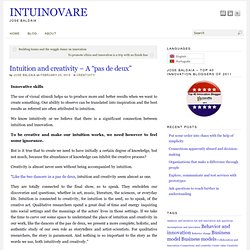

Le bonheur au travail en 50 dessins de presse. Jusqu’au 14 septembre, 50 dessins de presse sur le thème du travail sont exposés Galerie Soufflot à l’université Panthéon-Sorbonne.

Cette exposition Le bonheur au travail ? A été organisée par la Société d’Ergonomie de Langue Française (SELF) qui fête ses 50 ans. Je suis allée la voir ce matin (l’accès est libre et gratuit). Une exposition qui fait à la fois sourire (souvent jaune car la réalité du monde du travail n’est pas toujours très gaie) et réfléchir. Ces dessins et caricatures de presse, signés de Voutch, Gabs, Pessin, Plantu pour ne citer que les plus connus, mettent en lumière les travers du monde du travail, bien plus rapidement que de longs textes. Ils nous tendent un miroir grossissant du monde de l’entreprise, de ses travers, ses dérives et ses contradictions. STRANGE SURFBOARD-GUITAR. The Japanese do come up with some fairly odd ideas and inventions but perhaps none can hope to trump Masayoshi Takanaka’s SURFBOARD GUITAR made from a real cut-out surfboard.

Masayoshi is actually quite renowned for his off-the-wall collection of guitars which also includes a Model-Railway guitar (Pictured below). The 40 best street art works i’ve seen this year. The 40 best street art works i’ve seen this year on November 12, 2012 Share this:

100 images for visual brainstorming. Intuition and creativity – A “pas de deux” Innovative skills The use of visual stimuli helps us to produce more and better results when we want to create something.

Our ability to observe can be translated into inspiration and the best results as referred are often attributed to intuition. We know intuitively or we believe that there is a significant connection between intuition and innovation. To be creative and make our intuition works, we need however to feel some ignorance. The Right Kind of Visualisation. Is what you see, really what you get?

There are some wild claims out there for the power of visualisation. Things like: if you can imagine it, then it will come to you. Of course there’s always been a huge market for telling people things they want to hear, even if it’s complete rubbish. Still, visualisation can certainly be important in reaching goals. Much research has been conducted in athletics which shows the power of visualisation. Conectivitiz : El oro verde facilitation en... Conectivitiz : Ways to amp your creativity... Why Creativity is the New Economy. His And Hers Colors.
Creativity is Child’s Play. What the brain draws from: Art and neuroscience. In Spain's Tito Bustillo Cave, scientists found these horse paintings overlaying older red paintings, which could be 29,000 years or older.

This Egyptian wall painting, from 1350 BC, is an example of how artists have long been drawing outlines around figures of people and animals. Leonardo da Vinci took advantage of the differences in the human central and peripheral visual systems to create a dynamic smile in the "Mona Lisa. " This is a simulation by Margaret Livingstone of what you perceive when you view the "Mona Lisa" in your peripheral vision, on the left and middle, and straight-on. Note how the smile changes. In "Impression Sunrise" by Claude Monet, circa 1873, the artist makes the sun look unusually bright by choosing an orange with the same luminance as the background, says Margaret Livingstone of Harvard University. Impressionistic portraits such as this by Pierre-Auguste Renoir may be have particular emotional appeal because of the blurriness or patchiness of the face.
Lines Faces. Creativity and IQ, Part I: What Is Divergent Thinking? How Is It Helped by Sleep, Humor and Alcohol? Proximiteam : andando por el barrio de Chamberi... PicOfTheDay) Would You Ride On This? #Creativity #POTD. Historical Statues Get Dressed. In his photomanipulation series called ‘Stone Street’, Paris-based art director Alexis Persani has taken the photos of statues found on the streets and in museums and dressed them up digitally using Photoshop. The series appears to create a distinct gap between ancient art and modern fashion—making these concrete statues appear more human. In the video below, Persani demonstrates to us how he ‘dresses’ the statue on Photoshop. Click to watch the video below:
Colorful Crammed Headquarters - The Hurley Campus Is Bursting With Branded Features. How to become creative – the short honest truth. I’ve spent a decade studying how creatives do what they do and its simple: they work. Creativity is best thought of as a kind of effort, not an abstract thing – it’s what goes on when you are trying to solve a problem. The problem could be writing a poem, making a song, designing a website, anything. But no creative person in history was creative independent of working on some kind of project. The biggest difference between you and Picasso, or Einstein, or whoever your heroes are is that they out work(ed) you. Explaining Economic Theory with Rap Music. You may not have seen Russ Roberts when browsing our Top Artists pages, and that would be because he’s not primarily a musician, but in fact an economist.

While you might be wondering why we’re posting something about economics on a music blog, it’s actually simple, Russ Roberts, a research fellow at the Hoover Institution and economics professor at George Mason University has started use rap music to help explain economic theory to those of us who aren’t economists. Roberts has already written and produced two rap videos which have received more than 4.5 million collective views, highlighting the unique and contrasting philosophies of economists John Maynard Keynes, a proponent of active policy responses to the public sector, and Friedrich Hayek, who advocated free market capitalism.